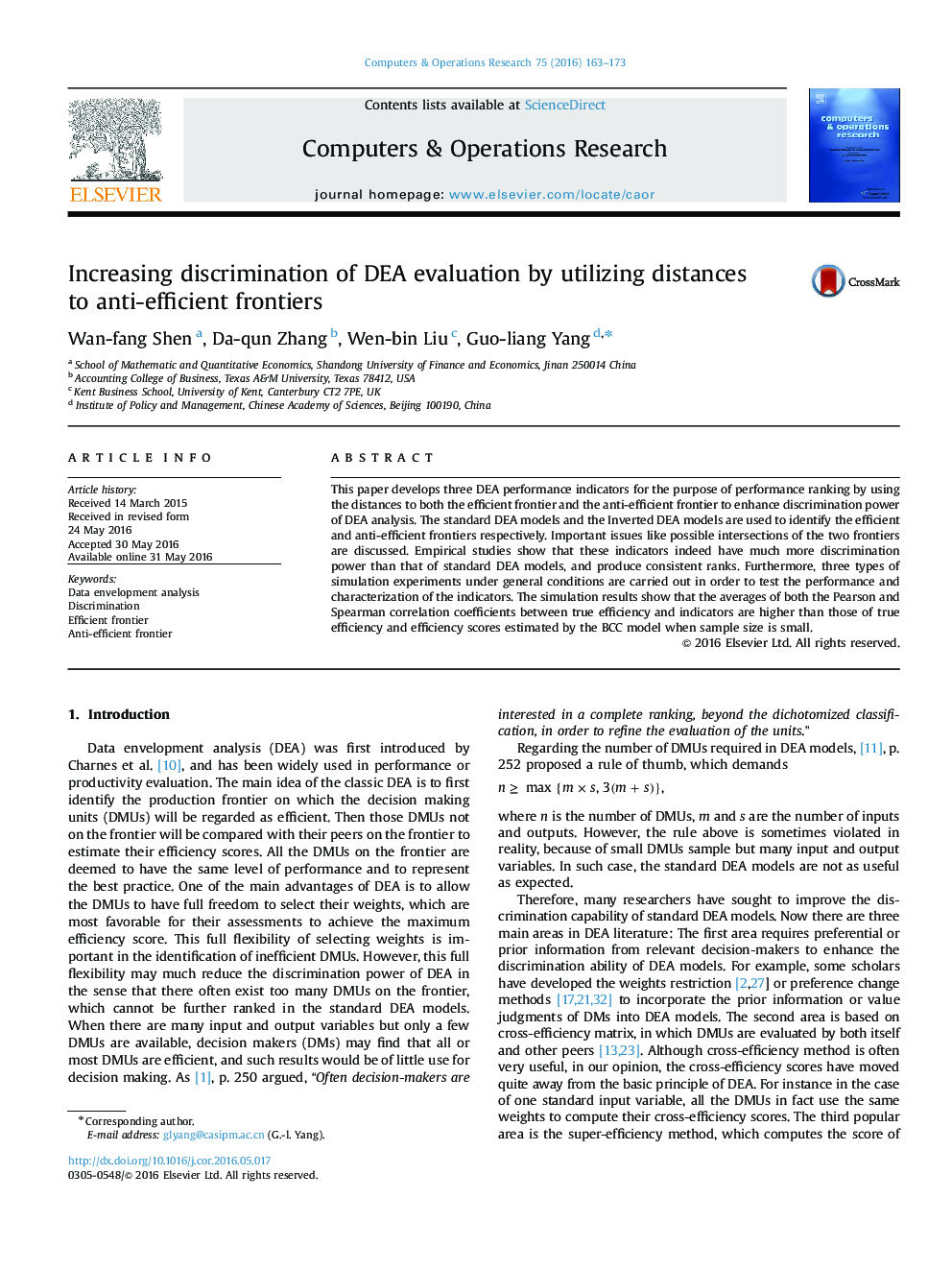| Article ID | Journal | Published Year | Pages | File Type |
|---|---|---|---|---|
| 6892754 | Computers & Operations Research | 2016 | 11 Pages |
Abstract
This paper develops three DEA performance indicators for the purpose of performance ranking by using the distances to both the efficient frontier and the anti-efficient frontier to enhance discrimination power of DEA analysis. The standard DEA models and the Inverted DEA models are used to identify the efficient and anti-efficient frontiers respectively. Important issues like possible intersections of the two frontiers are discussed. Empirical studies show that these indicators indeed have much more discrimination power than that of standard DEA models, and produce consistent ranks. Furthermore, three types of simulation experiments under general conditions are carried out in order to test the performance and characterization of the indicators. The simulation results show that the averages of both the Pearson and Spearman correlation coefficients between true efficiency and indicators are higher than those of true efficiency and efficiency scores estimated by the BCC model when sample size is small.
Related Topics
Physical Sciences and Engineering
Computer Science
Computer Science (General)
Authors
Wan-fang Shen, Da-qun Zhang, Wen-bin Liu, Guo-liang Yang,
